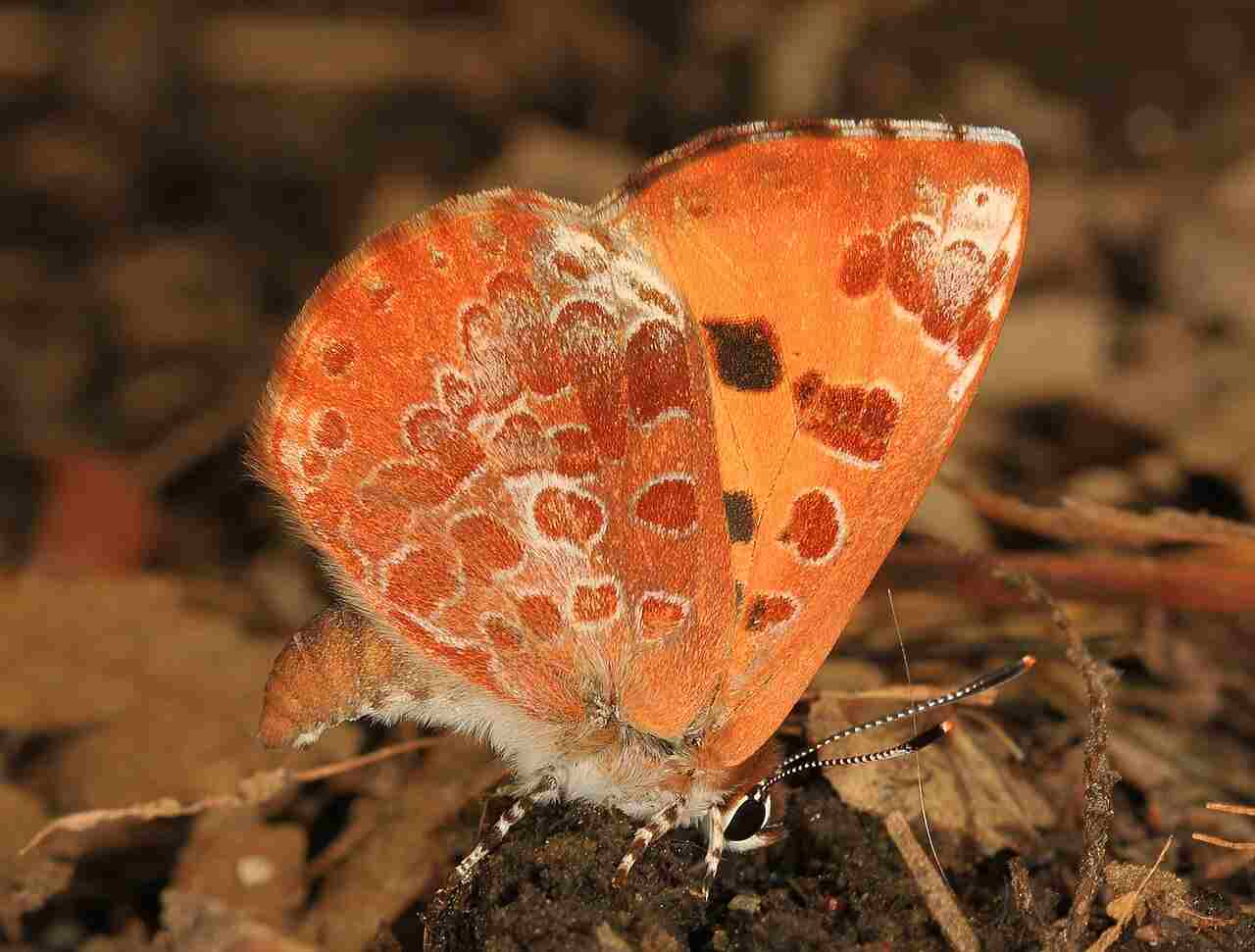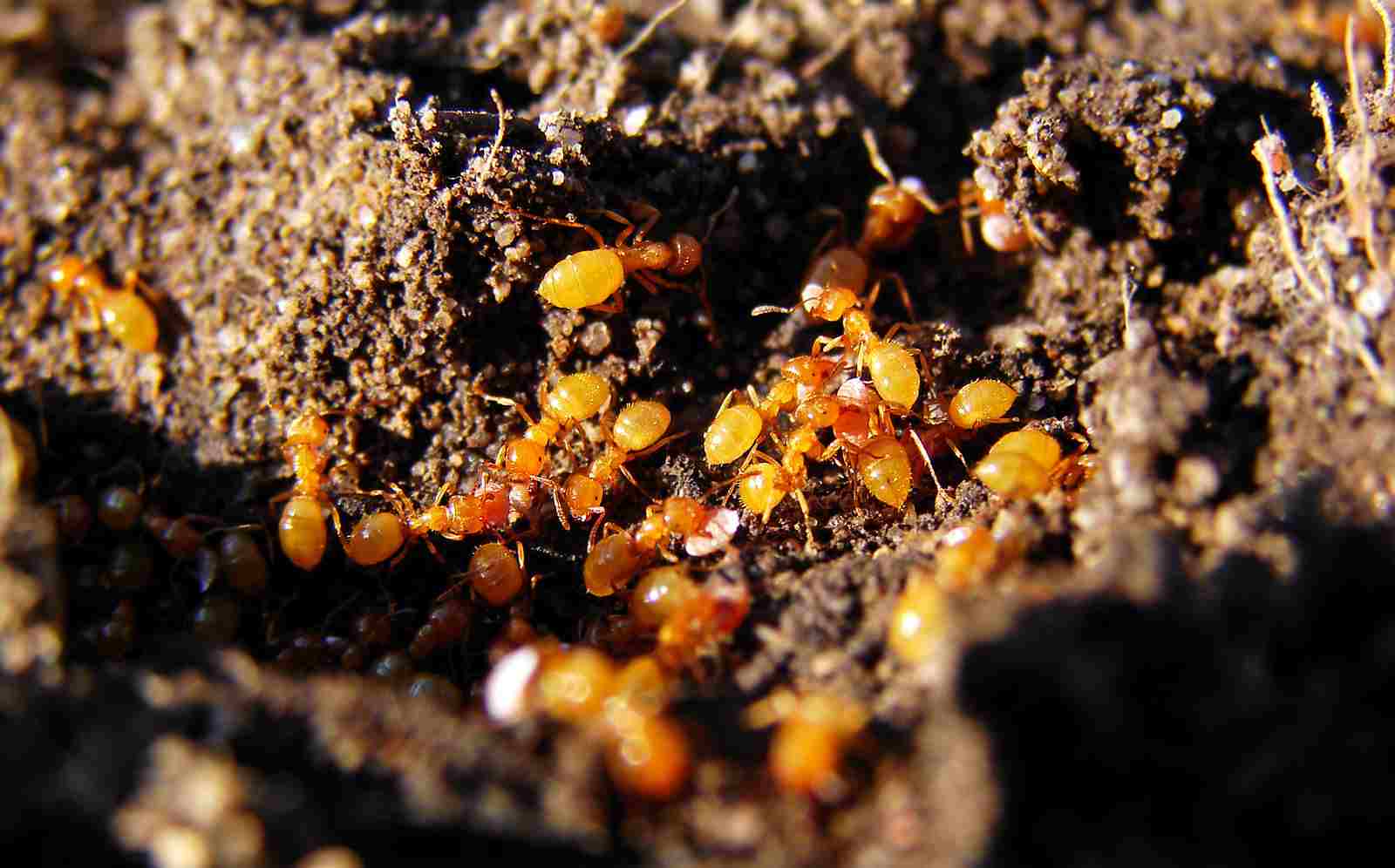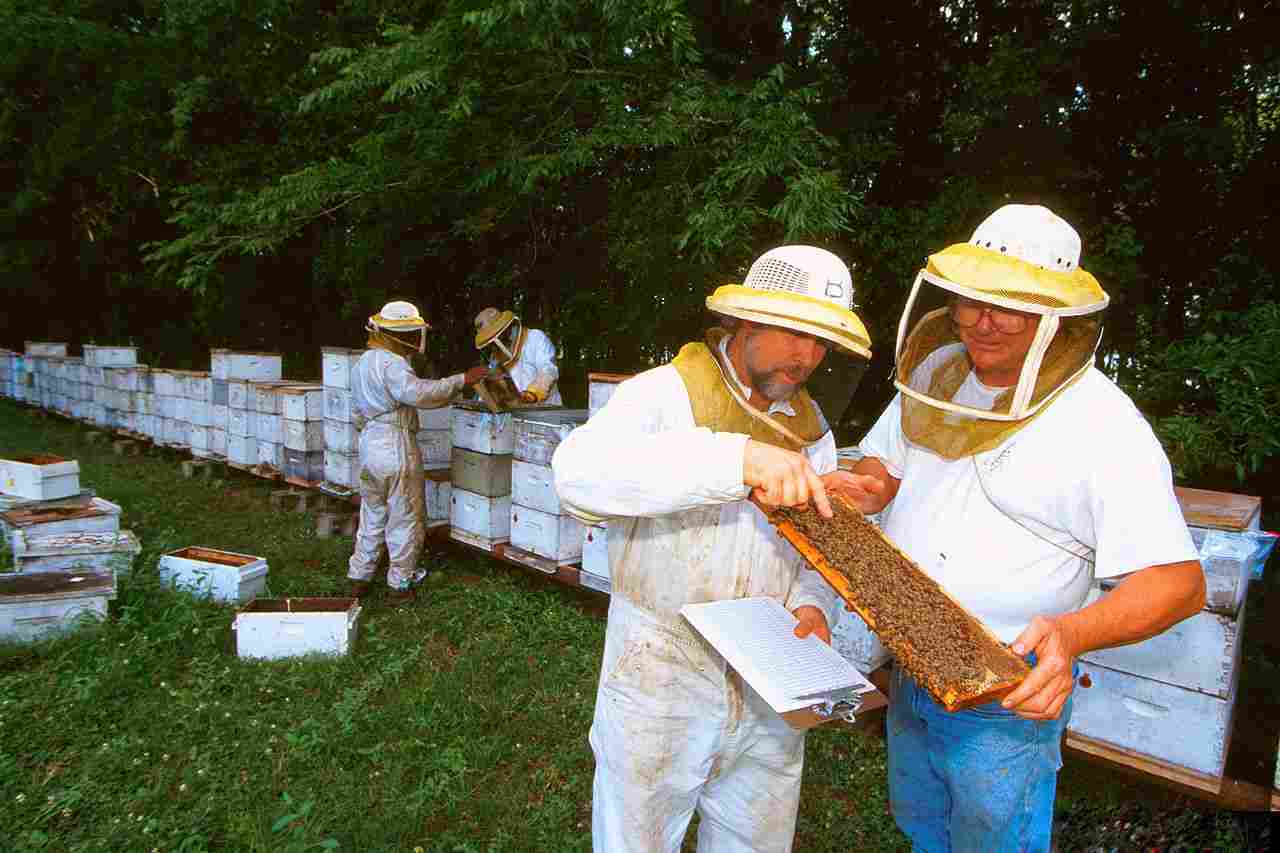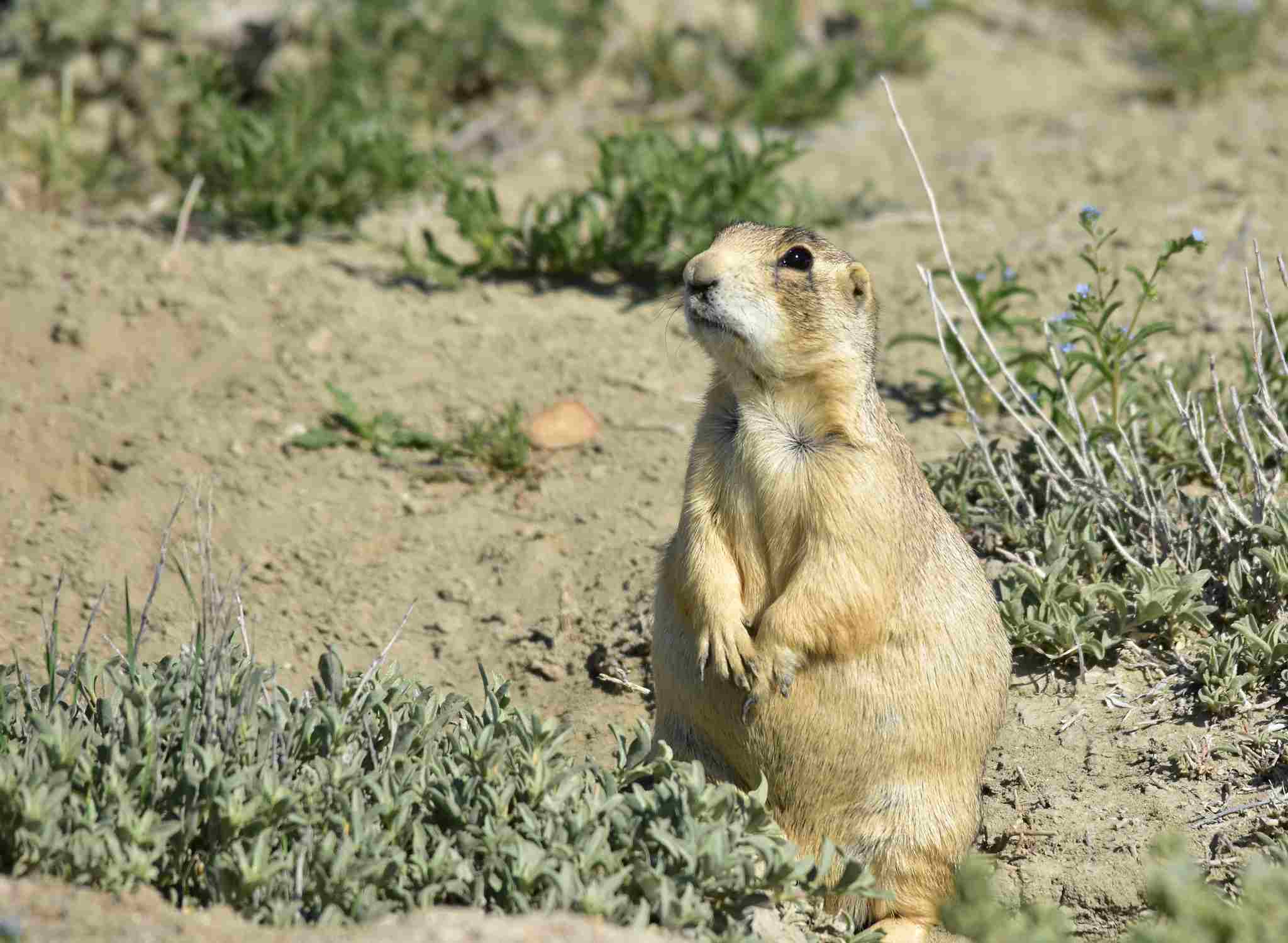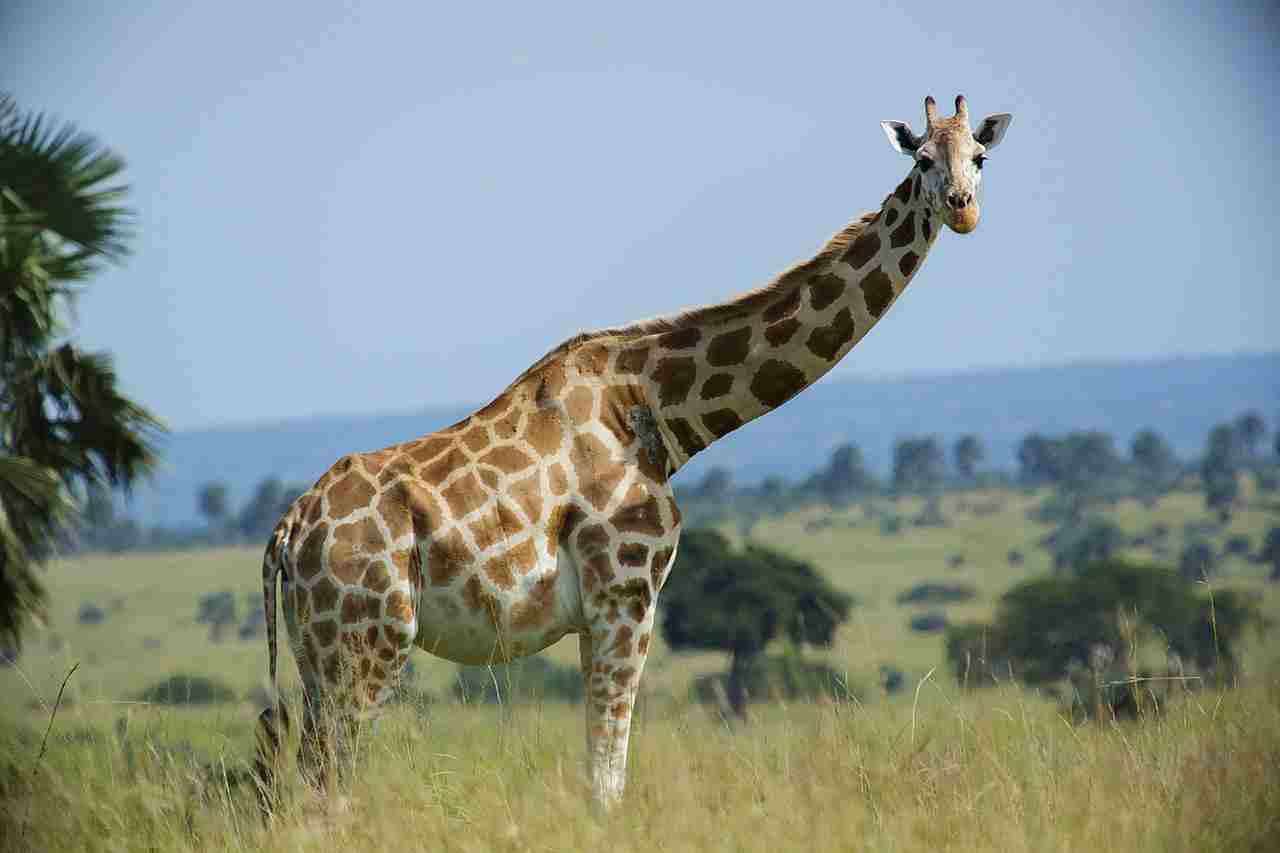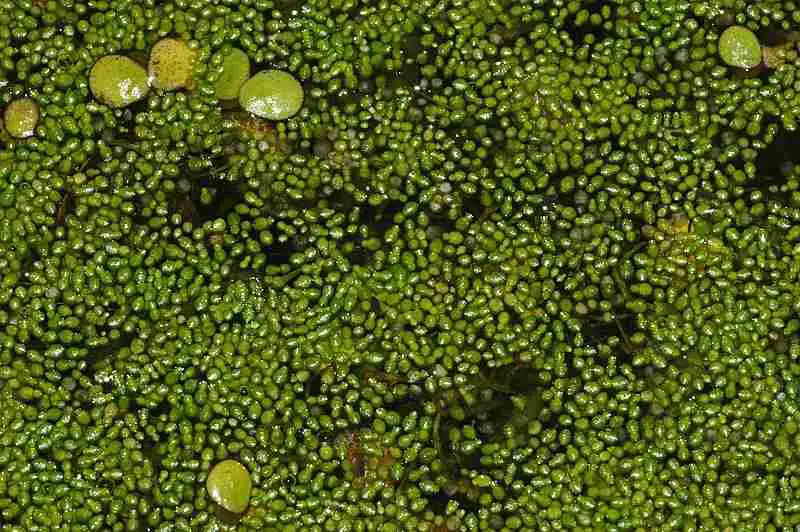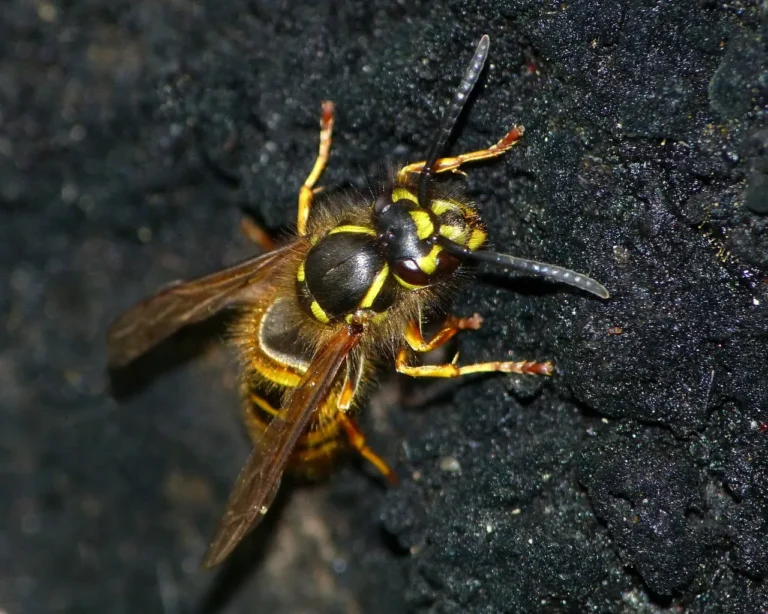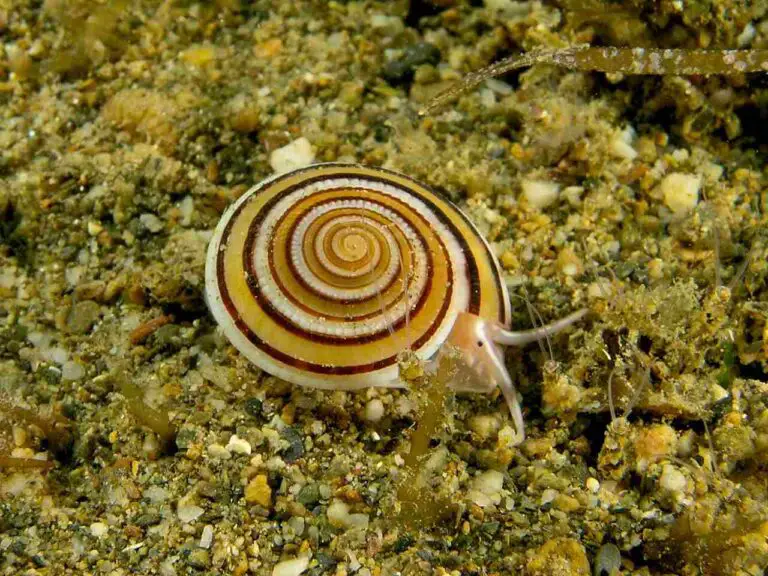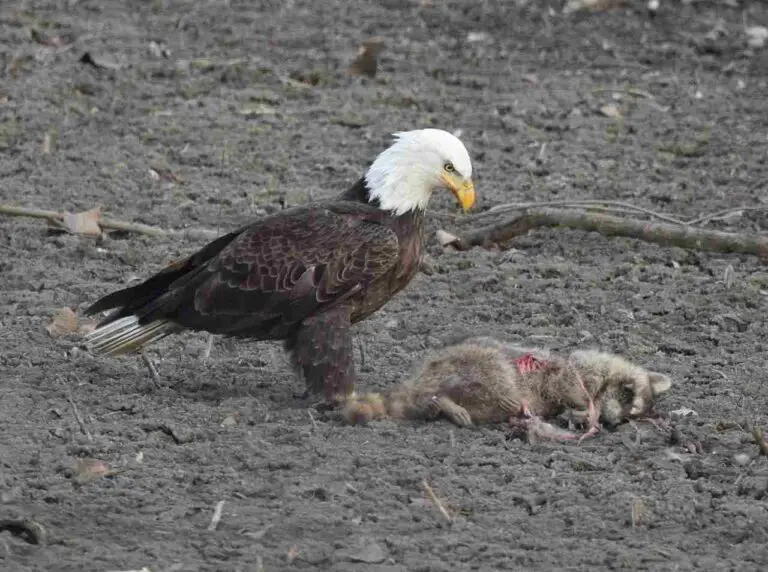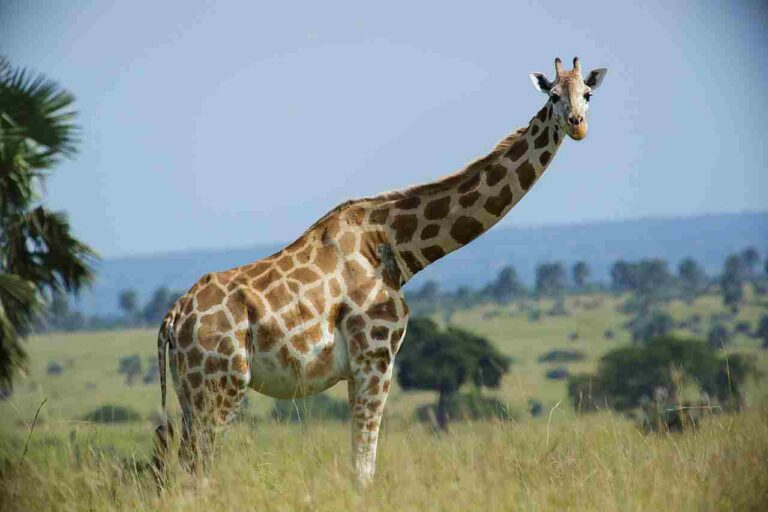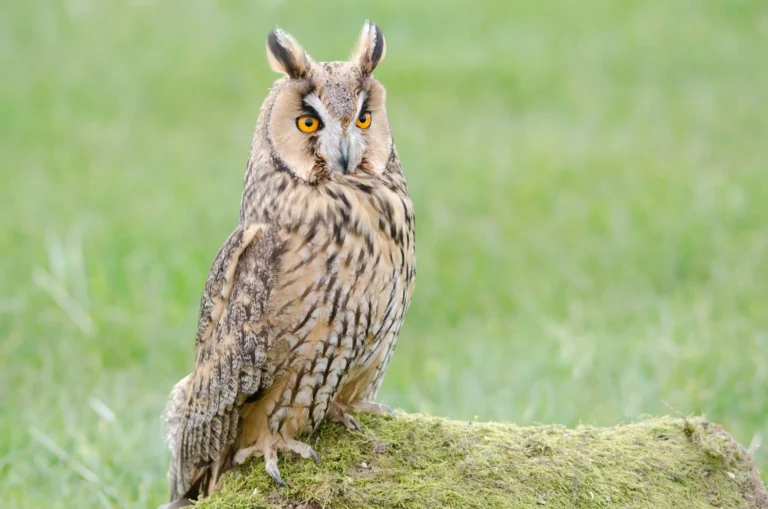Are Bees Primary Consumers? Dietary Habits of Bees Revealed
Bees are indeed primary consumers due to their reliance on plants for energy and nutrients. Their herbivorous diet consists mainly of nectar and pollen, which they collect from flowers. Bees play a crucial role in pollination, transferring pollen from one flower to another, aiding in plant reproduction.
This makes them an essential link in the food chain, as they consume the primary producers (plants) and provide a food source for higher-level consumers. The relatively small size of bees and their trophic impact also contribute to their classification as primary consumers. Despite their small size, bees have a significant ecological impact through their foraging and pollination activities. Their dietary habits reveal their role as primary consumers in the ecosystem.
Are Bees Producers or Consumers?
Bees are not producers but rather consumers in the ecosystem. Unlike plants, they cannot manufacture their own food through photosynthesis. Instead, bees rely on other organisms, specifically plants, as their source of energy and nutrients. This makes them consumers that feed on producers in the food chain.
Bees have a herbivorous diet, primarily consisting of nectar and pollen collected from flowers. They play a vital role in pollination, transferring pollen from one flower to another, which aids in plant reproduction. By consuming the nectar and pollen, bees obtain the necessary energy and nutrients to sustain their own lives.
As consumers, bees occupy a significant position in the food web. They consume the primary producers, which are the plants, and serve as a food source for higher-level consumers. This makes them an essential link in the transfer of energy and nutrients through the ecosystem.
The classification of bees as consumers is further supported by their relatively small size and trophic impact. Despite their small stature, bees have a considerable ecological influence through their foraging and pollination activities. They contribute to the overall health and diversity of plant species by facilitating their reproduction.
Bees’ dietary habits reveal their role as primary consumers in the ecosystem. They rely solely on plants for their energy and nutrient needs, making them dependent on the primary producers. Without bees, the transfer of pollen and the subsequent pollination process would be significantly hindered, affecting the reproduction and survival of many plant species.
Is a Honey Bee a Producer or Consumer?
Like other bee species, the honey bee is a consumer rather than a producer. Unlike autotrophic organisms such as plants, honey bees are heterotrophic, meaning they cannot manufacture their own food through photosynthesis. Instead, they rely on other organisms, specifically plants, as their source of energy and nutrients.
Honey bees have a herbivorous diet, primarily consisting of nectar and pollen collected from flowers. They play a crucial role in pollination, transferring pollen from one flower to another, which aids in plant reproduction. By consuming the nectar and pollen, honey bees obtain the necessary energy and nutrients to sustain their own lives.
As consumers, honey bees occupy an important position in the food web. They rely on the primary producers, which are the plants, for their sustenance. Honey bees serve as a vital link in the transfer of energy and nutrients through the ecosystem. Without honey bees, the transfer of pollen and the subsequent pollination process would be significantly hindered, affecting the reproduction and survival of many plant species.
The classification of honey bees as consumers is supported by their dietary habits and dependence on plants. They rely solely on plants for their energy and nutrient needs, making them dependent on the primary producers. Honey bees are primary consumers because they directly rely on the materials derived from plants for sustenance, such as pollen and nectar.
What Type of Consumer is a Bee?
Bees are classified as primary consumers because they rely directly on the materials derived from plants, which are the primary producers, for their sustenance. These materials include pollen and nectar, which bees collect from flowers. As herbivorous heterotrophs, bees have a diet that consists solely of plant-based material.
As primary consumers, bees play a crucial role in the transfer of energy and nutrients through the ecosystem. They serve as a vital link between plants and other organisms in the food web. By consuming the nectar and pollen, bees obtain the necessary energy and nutrients to sustain their own lives.
The dependence of bees on plants for their energy and nutrient needs makes them an integral part of the ecosystem. Without bees, the transfer of pollen and the subsequent pollination process would be significantly hindered, affecting the reproduction and survival of many plant species. Therefore, bees are not only important for their role in pollination but also for their position as primary consumers in the food web.
Is a Bee a Primary Consumer?
Yes, bees are indeed primary consumers. They fulfill this role by feeding directly on plant-based material, specifically pollen and nectar collected from flowers. As herbivorous heterotrophs, bees rely solely on plants for their sustenance. This dietary habit places them directly above plants in the trophic hierarchy.
Bees play a crucial role in the transfer of energy and nutrients through the ecosystem as primary consumers. By consuming the nectar and pollen, they obtain the necessary energy and nutrients to sustain their own lives. This makes them a vital link between plants and other organisms in the food web.
One reason why bees are considered primary consumers is their herbivorous diet. They exclusively feed on plant-based material, making them dependent on plants for their energy and nutrient needs. This dietary specialization sets them apart from other consumers that may have a more varied diet.
Another reason why bees are classified as primary consumers is their relatively small size and trophic impact. While they may seem insignificant individually, the collective impact of bees as primary consumers is significant. Their feeding behavior and role in pollination contribute to the overall health and functioning of ecosystems.
Furthermore, bees exhibit relative biological simplicity compared to other consumers. Their diet consists mainly of pollen and nectar, which are relatively simple food sources compared to the complex diets of other consumers. This simplicity allows bees to efficiently extract the necessary energy and nutrients from their food.
Reasons Why a Bee is a Primary Consumer
1. Herbivorous Diet
Bees have a herbivorous diet, primarily feeding on pollen, nectar, and sap. This dietary preference classifies them as primary consumers in the food chain.
Pollen serves as a crucial source of protein for bees. They collect pollen from flowers using their specialized body structures, such as pollen baskets on their hind legs. Bees then transport the pollen back to their hives to feed the developing larvae. This reliance on pollen as a food source further solidifies their position as primary consumers.
Nectar, on the other hand, provides bees with the necessary energy to sustain their activities. Bees collect nectar from flowers using their long proboscis, a straw-like structure that allows them to suck up the sweet liquid. Nectar is rich in carbohydrates, which bees convert into energy to power their flight and other essential functions. By exclusively relying on nectar as their energy source, bees demonstrate their primary consumer status.
In addition to pollen and nectar, some bee species also consume sap. Sap is the sugary fluid found in the phloem of plants. Bees extract sap by piercing the plant tissue and feeding on the nutrient-rich liquid. While sap consumption is not as common among all bee species, it further highlights their herbivorous diet and reinforces their role as primary consumers.
2. Plants are Their Sole Source of Energy and Nutrients
Plants are the sole source of energy and nutrients for bees, making them primary consumers in the food chain. Bees obtain energy from nectar, a sweet liquid found in flowers. Nectar is rich in carbohydrates, which bees convert into energy to fuel their flight and other essential activities. By exclusively relying on nectar as their energy source, bees demonstrate their primary consumer status.
In addition to energy, bees also obtain nutrients from plants. They feed pollen to their juveniles, also known as larvae. Pollen serves as a crucial source of protein for the developing bees. Adult bees collect pollen from flowers using their specialized body structures, such as pollen baskets on their hind legs. They then transport the pollen back to their hives to feed the growing larvae. This reliance on pollen as a food source further solidifies the bees’ position as primary consumers.
The dependence of bees on plants for both energy and nutrients highlights their role as primary consumers. They rely on the resources provided by plants to meet their dietary needs and sustain their population. Without the availability of plants, bees would struggle to survive and reproduce.
By understanding the dietary habits of bees and their classification as primary consumers, we gain insight into their ecological role and importance in the food web. Bees play a vital role in pollination, facilitating the reproduction of flowering plants. This mutualistic relationship between bees and plants is essential for maintaining biodiversity and ecosystem stability.
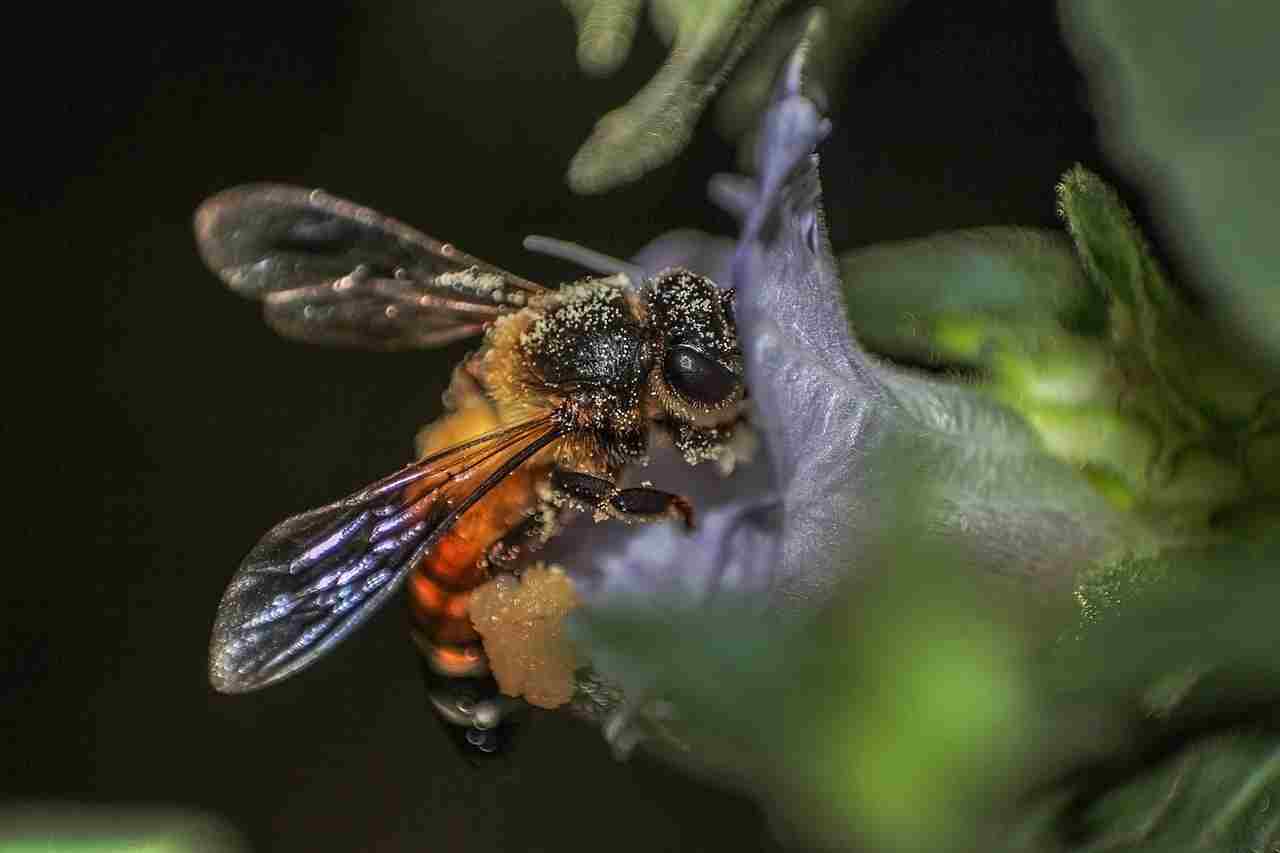
3. Relatively Small Size and Trophic Impact
Bees are relatively small creatures, which contributes to their classification as primary consumers. Their small size limits their trophic impact or cascading effect compared to larger secondary consumers like frogs, toads, lizards, weasels, and raccoons.
Due to their small size, bees have a limited capacity to consume large quantities of plant material or prey. They primarily focus on collecting nectar and pollen from flowers, which are their main sources of energy and nutrients. While they may visit numerous flowers in search of these resources, their individual impact on the plant population is relatively small.
In contrast, secondary consumers, such as frogs or raccoons, have a larger trophic impact. They consume a significant amount of primary consumers, such as insects or small mammals, which can have a cascading effect on the entire food web. The loss or decrease in the population of secondary consumers can disrupt the balance of the ecosystem.
Bees, on the other hand, have a more direct relationship with plants as primary consumers. They contribute to pollination, facilitating the reproduction of flowering plants. This interaction is crucial for maintaining biodiversity and ecosystem stability.
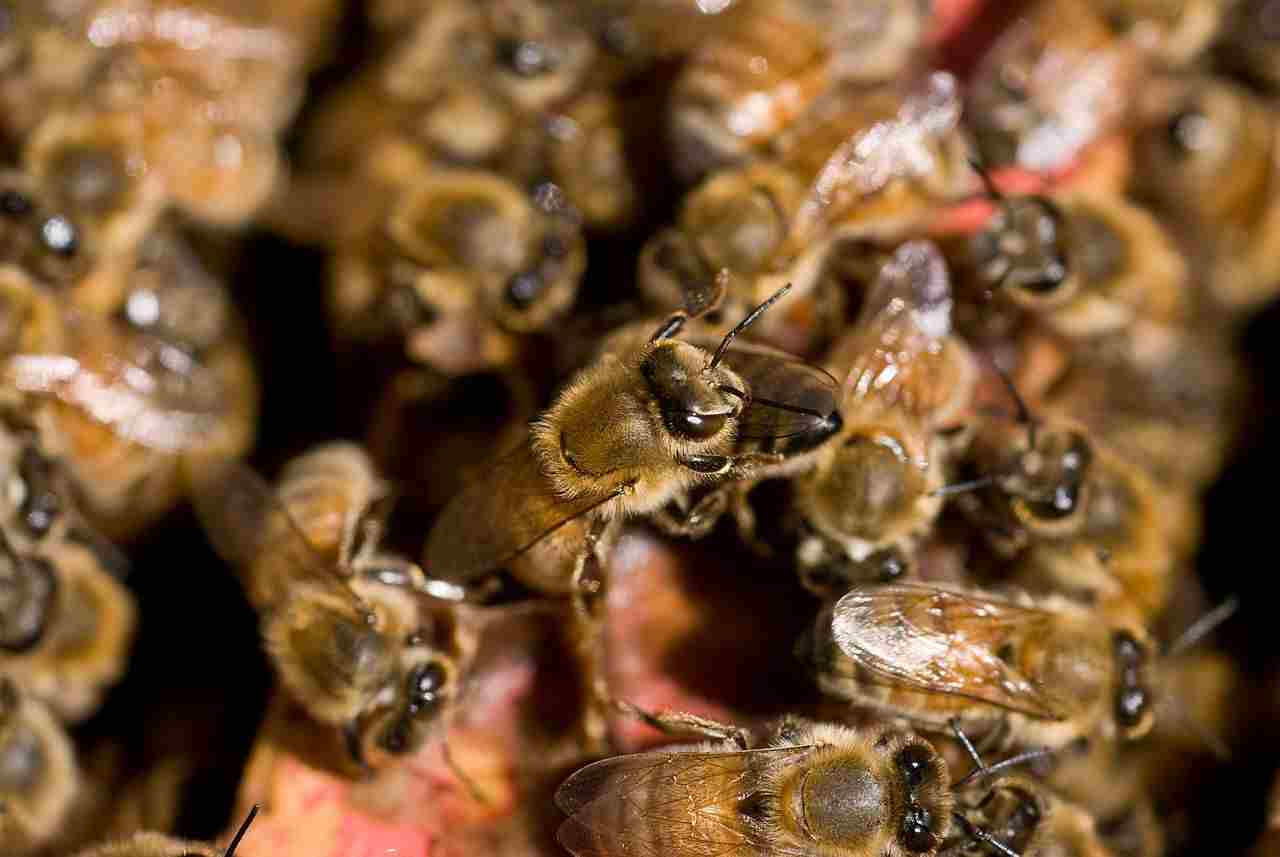
4. Relative Biological Simplicity
Bees are considered primary consumers due to their biological simplicity compared to higher consumers in the food web. This is a key factor in their classification and dietary habits.
In terms of their anatomy and physiology, bees have a relatively simple digestive system designed to process plant-based food sources. Their mouthparts are adapted for collecting nectar and pollen from flowers, which are their primary sources of energy and nutrients. This specialized diet sets them apart from secondary consumers that have more complex digestive systems to process a wider range of prey.
Furthermore, bees have a relatively simple body structure compared to larger secondary consumers. Their small size and streamlined body allow them to efficiently navigate through flowers and collect resources. This simplicity in body structure also limits their trophic impact on the ecosystem, as they consume smaller quantities of plant material compared to larger consumers.
Is a Bee a Decomposer?
No, a bee is not a decomposer. Unlike millipedes or termites, bees are not detritivorous. They do not feed on organic remains or waste. Additionally, bees are not saprophytic like fungi and bacteria, which obtain nutrients by decomposing dead organic matter.
Bees have a specialized diet that consists mainly of nectar and pollen from flowers. They are herbivores, relying on plants as their primary source of energy and nutrients. This dietary preference sets them apart from decomposers, which play a crucial role in the process of biodegradation by breaking down dead organic material.
The role of decomposers is to recycle nutrients and contribute to the overall health of ecosystems. They break down organic matter, such as fallen leaves or dead animals, into simpler compounds that can be used by other organisms. Bees, on the other hand, do not directly contribute to this process.
Bees have a different ecological niche in the food web. They are considered primary consumers, as they obtain their energy and nutrients directly from plants. Their role is essential in pollination, as they transfer pollen from one flower to another, facilitating plant reproduction. This interaction between bees and plants is mutually beneficial, as bees receive food in the form of nectar while aiding in the reproduction of flowering plants.
Position and Function of Bees in the Food Web
Bees occupy a crucial position in the food web as primary consumers. They are located at trophic level 2, directly above producers such as vascular and non-vascular plants. This means that bees rely on plants as their main source of energy and nutrients, making them an integral part of the ecosystem.
One of the key functions of bees in the food web is their contribution to species richness and biodiversity within the producer community. By pollinating a wide variety of flowering plants, bees facilitate the reproduction and survival of numerous plant species. This, in turn, leads to a diverse and thriving ecosystem, as different plant species provide habitats and food sources for a range of other organisms.
In addition to their role in promoting biodiversity, bees also play a vital function in transferring energy and nutrients from producers to non-herbivorous consumers in higher trophic levels. Through their foraging activities, bees collect nectar and pollen from flowers and transport them to their hives or nests. This process not only sustains the bee colony but also provides a valuable food source for other organisms, such as birds and mammals, that rely on these resources for their own survival.
By acting as pollinators, bees facilitate the reproduction of flowering plants, ensuring the production of fruits, seeds, and nuts. These plant reproductive structures serve as food sources for a wide range of animals, including insects, birds, and mammals. Therefore, the presence of bees in the food web is essential for the overall functioning and stability of ecosystems.
In terms of their position in the food web, bees are considered primary consumers because they directly consume plant material. They extract nectar, a sugary substance produced by flowers, as a source of energy. Additionally, bees collect pollen, which contains essential nutrients, to feed their larvae. This herbivorous diet distinguishes bees from other organisms in higher trophic levels that consume animal matter.
FAQs
1. What Trophic Level are Bees In?
Bees are classified as primary consumers, also known as herbivores, in the trophic level hierarchy. They occupy the second level, directly above the producers. As primary consumers, bees primarily feed on plant-based food sources such as nectar and pollen. They play a crucial role in pollination, transferring pollen from one flower to another, which helps in the reproduction of plants.
Bees are not carnivores and do not consume other animals. Instead, they rely on the energy and nutrients obtained from plants to sustain their own growth and survival. This makes them an essential link in the food chain, connecting the energy captured by plants to higher trophic levels.
2. Are Bees Carnivores or Herbivores?
Bees are herbivores, meaning they primarily consume plant-based food sources. They do not consume other animals. As herbivores, bees play a crucial role in the ecosystem by pollinating flowers and aiding in the reproduction of plants.
Bees rely on the energy and nutrients obtained from plants to sustain their own growth and survival. Their main sources of food are nectar and pollen, which they collect from flowers. Nectar provides bees with carbohydrates, while pollen is a source of protein and other essential nutrients.
By visiting flowers to collect nectar and pollen, bees inadvertently transfer pollen from the male parts of one flower to the female parts of another flower, enabling fertilization and the production of seeds. This process of pollination is vital for the reproduction of many plant species, including those that provide food for other animals.
3. Are Bees Heterotrophs?
Yes, bees are heterotrophs. As heterotrophs, bees rely on other organisms, specifically plants, for their food and energy. They cannot produce their own food through photosynthesis like plants do. Instead, bees obtain their nourishment by consuming plant-based food sources.
Bees primarily feed on nectar and pollen, which they collect from flowers. Nectar provides bees with carbohydrates, while pollen is a source of protein and other essential nutrients. By gathering these resources from plants, bees are able to sustain their growth and survival.
In their role as pollinators, bees play a crucial part in the ecosystem by aiding in the reproduction of plants. As they visit flowers to collect nectar and pollen, bees inadvertently transfer pollen from one flower to another, enabling fertilization and the production of seeds.
4. Are Bees Secondary Consumers?
No, bees are not secondary consumers. Secondary consumers are organisms that feed on primary consumers, which are herbivores. Bees, on the other hand, are primary consumers themselves as they primarily feed on nectar and pollen from flowers. They are herbivores that obtain their food directly from plants.
As primary consumers, bees play a crucial role in the food chain by transferring energy from plants to higher trophic levels. They gather nectar for carbohydrates and pollen for protein and other essential nutrients. This diet sustains their growth and survival.
By visiting flowers to collect nectar and pollen, bees inadvertently aid in the reproduction of plants through pollination. This process enables fertilization and the production of seeds, contributing to the overall health and diversity of ecosystems.
5. Are Bees 1st 2nd or 3rd Consumers?
Bees are considered 1st consumers because they are primary consumers. As primary consumers, bees occupy the first level of the consumer hierarchy after the producers. They obtain their food directly from plants, primarily feeding on nectar and pollen from flowers.
Bees play a crucial role in the ecosystem as primary consumers. They gather nectar for carbohydrates and pollen for protein and other essential nutrients. This diet sustains their growth and survival. By visiting flowers to collect nectar and pollen, bees inadvertently aid in the reproduction of plants through pollination.
Pollination is a vital process that enables fertilization and the production of seeds, contributing to the overall health and diversity of ecosystems. Bees transfer energy from plants to higher trophic levels, making them an essential link in the food chain.
As primary consumers, bees serve as a food source for secondary consumers, such as birds and other insects. They provide energy and nutrients to these organisms, allowing them to thrive.
6. Are Wasps Primary Consumers?
Wasps, like bees, can be considered primary consumers. They are not strictly herbivores or carnivores, but rather omnivores. This means that they have a varied diet and can feed on both plant materials, such as nectar, and animals, including other insects. As primary consumers, wasps play a crucial role in the ecosystem by gathering energy and nutrients from both plant and animal sources.
They can also scavenge on the remains of insects and other animals, further contributing to the nutrient cycle. This diverse diet allows wasps to thrive in various habitats and fulfill their ecological role as primary consumers. By transferring energy from plants and other organisms, wasps support the overall health and balance of the food chain.
7. Are Bees Herbivores, Carnivores, or Omnivores?
Bees are primarily herbivores, as their diet consists mainly of plant materials. They obtain their nutrition from the nectar and pollen of flowers. Bees are not predatory or scavenging like carnivores, which primarily feed on other animals. They are also not opportunistic like omnivores, which have a varied diet that includes both plant and animal sources.
As herbivores, bees play a crucial role in pollination, transferring pollen from one flower to another and facilitating plant reproduction. This symbiotic relationship between bees and plants is essential for the survival of many plant species and the overall health of ecosystems.
8. Are Bees Producers?
No, bees are not producers. They are consumers. Producers, such as plants, have the ability to manufacture their own food through photosynthesis. Bees, on the other hand, rely on external sources for their nutrition. They collect nectar and pollen from flowers, which serve as their primary food sources.
Bees play a crucial role in the ecosystem as pollinators, but they do not produce their own food. Instead, they gather resources from plants and convert them into energy for their survival. By visiting flowers and collecting nectar, bees inadvertently transfer pollen from one flower to another, aiding in the reproduction of plants. This process is essential for the growth and diversity of plant species
9. Do Bees Produce or Make Honey?
Bees “make” honey from nectar, which is a more accurate term than “produce.” Only honeybees have the ability to manufacture honey. They have a wide distribution and live in large colonies. The female bees, known as “workers,” are responsible for collecting nectar from flowers and converting it into honey.
This process involves regurgitating the nectar and adding enzymes to break down the sugars. The bees then store the honey in honeycomb cells within the hive. Honey serves as a vital food source for the bees, providing them with energy and nutrients to sustain their colony throughout the year.
10. What is Honey Bee Production?
Honey bee production, also known as beekeeping, is a practice where beekeepers or apiarists raise bees for various purposes. The primary product of honey bee production is, of course, honey. However, beekeepers also harvest other valuable products from the bees, such as propolis, royal jelly, beeswax, and bee pollen.
Beekeeping serves multiple functions, one of which is pollination. Bees play a crucial role in pollinating plants, which is essential for the reproduction of many crops and the overall health of ecosystems. By keeping bees, beekeepers contribute to the pollination process and help ensure the abundance of fruits, vegetables, and other agricultural products.
Beekeepers typically keep their bees in designated areas called bee yards or apiaries. These locations provide a suitable environment for the bees to thrive and carry out their activities. Beekeepers carefully manage the hives, ensuring that the bees have access to food sources, maintaining the health of the colony, and protecting them from pests and diseases.
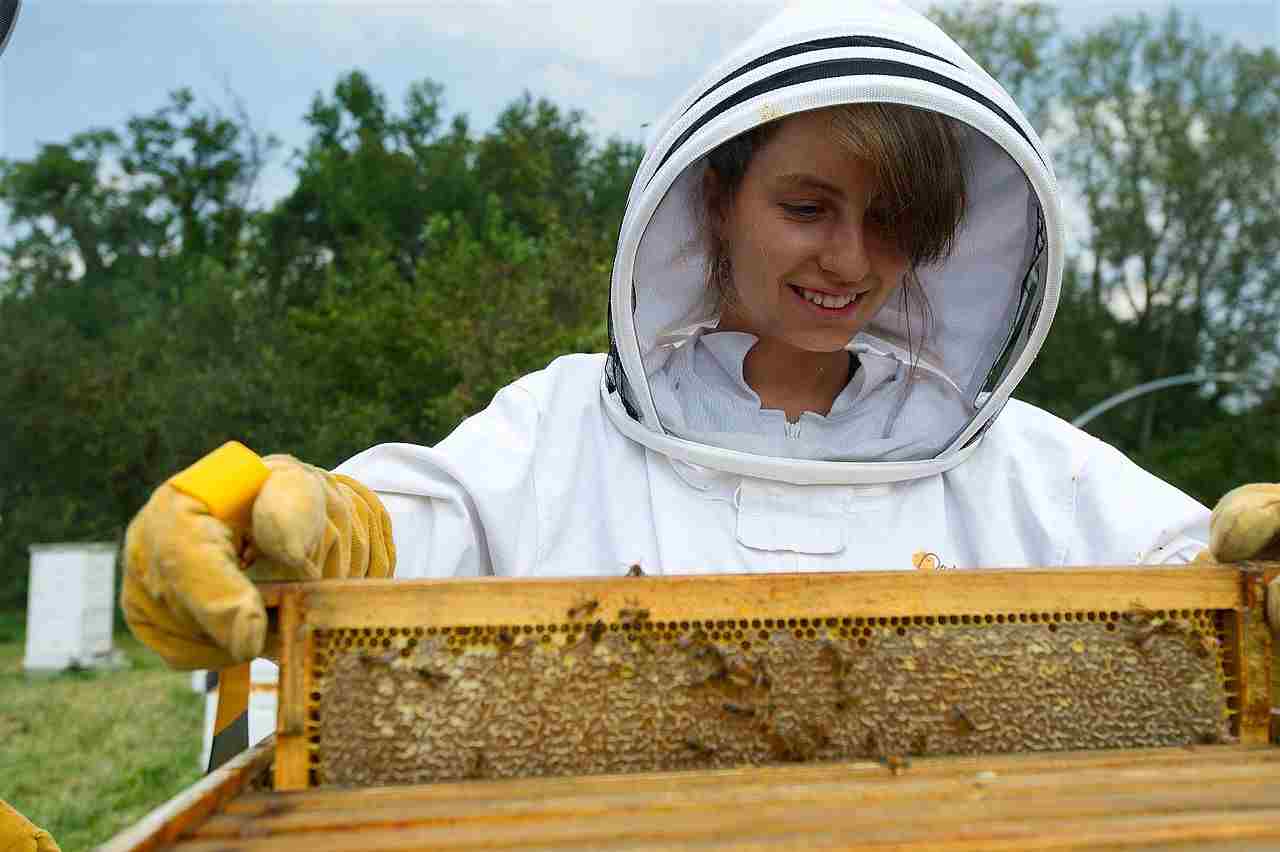
11. Is a Bee a Producer, Consumer, or Decomposer
A bee is a consumer, not a producer, because it is not autotrophic. Unlike plants, bees cannot produce their own food through photosynthesis. Additionally, bees are not decomposers because they do not feed on dead organic matter like saprophytes or detritivores. Bees primarily obtain their nutrition from plant products such as nectar and pollen.
They play a vital role in pollination, transferring pollen from one flower to another, which helps in the reproduction of many plants. This process is crucial for the production of fruits, vegetables, and other agricultural products.
12. What Does a Bee Eat?
Bees primarily feed on plant products such as sap, nectar, and pollen. They have a specialized diet that revolves around these essential resources. Nectar, a sweet liquid produced by flowers, serves as their main source of energy. Bees collect nectar using their long tongues and store it in their honey stomachs to bring back to the hive.
Pollen, on the other hand, provides bees with proteins and other nutrients necessary for their growth and development. Bees gather pollen by brushing against the anthers of flowers and then carry it back to the hive on their hind legs. This diet of plant products is crucial for the survival and productivity of bees, as well as their important role in pollination.
13. What Eats Bees?
Bees have a variety of predators in their ecosystem. Animals such as raccoons, skunks, frogs, spiders, shrikes, bears, badgers, flycatchers, greater honeyguides, and lizards are known to prey on bees. These predators have different strategies for capturing bees, ranging from ambushing them in their nests to catching them in mid-air.
Predators play an important role in regulating bee populations and maintaining the balance of the ecosystem. However, it’s worth noting that bees have developed various defense mechanisms to protect themselves, such as stinging and flying in groups. This helps them survive and continue their vital role in pollination.
14. Is a Bee a Primary Consumer or Tertiary?
A bee is considered a primary consumer. As a primary consumer, bees feed directly on plants and their products, such as nectar and pollen. They play a crucial role in pollination, transferring pollen from one flower to another, which helps plants reproduce. Unlike tertiary consumers, bees are not predatory and do not have the same scale of impact on the ecosystem.
However, their role as primary consumers is vital for maintaining the balance of the food chain and supporting the overall health of the ecosystem. So, while bees may not be as large or predatory as tertiary consumers, they still hold a significant ecological role as primary consumers.
15. Is a Bee a Primary Consumer or Secondary?
A bee is a primary consumer, not a secondary consumer. This is because bees do not have a predatory nature. Instead, they are herbivorous and feed directly on producers, such as plants and their products like nectar and pollen.
Bees play a crucial role in pollination, which is essential for plant reproduction. They transfer pollen from one flower to another, aiding in the fertilization process. This makes them primary consumers in the food chain. Unlike secondary consumers, which feed on other consumers, bees rely on plants as their primary source of food. So, to answer the question, a bee is indeed a primary consumer.
16. What Type of Consumer is a Bee?
A bee is classified as a primary consumer. Unlike secondary consumers, which prey on other consumers, bees are not predatory or carnivorous. Instead, they are herbivorous and feed directly on producers, such as plants and their products like nectar and pollen. Bees play a vital role in pollination, aiding in the fertilization process and ensuring plant reproduction.
As primary consumers, bees rely on plants as their primary source of food. They extract nectar and collect pollen, making them an essential part of the food chain. So, to summarize, a bee is a herbivorous primary consumer in the ecosystem.
17. Is Honey Bee a Secondary Consumer?
No, a honey bee is not a secondary consumer. As mentioned earlier, bees are classified as primary consumers because they primarily feed on producers, such as plants and their products like nectar and pollen. They play a crucial role in pollination and are herbivorous in nature. Honey bees extract nectar and collect pollen from flowers, making them an essential part of the food chain.
Therefore, they do not consume other consumers or prey on other organisms, which is characteristic of secondary consumers.
18. Are Bees Herbivores?
Yes, bees are herbivores. They primarily feed on plant products such as sap, nectar, and pollen. Bees play a crucial role in pollination, transferring pollen from one flower to another, which helps in the reproduction of plants.
Their diet consists solely of plant-based food sources, making them herbivorous creatures. By collecting nectar and pollen from flowers, bees contribute to the growth and survival of various plant species. Their herbivorous nature is essential for maintaining the balance and diversity of ecosystems.
19. What Eats Bees in The Food Chain?
In the food chain, bees are preyed upon by various organisms, including secondary consumers such as amphibians, reptiles, and some mammals like raccoons. These animals feed on bees as part of their diet, taking advantage of the energy and nutrients they provide. This predation is a natural part of the ecosystem and helps maintain the balance of populations within the food web.
By being consumed by secondary consumers, bees play a crucial role in transferring energy and nutrients from lower trophic levels to higher ones. This interaction highlights the interconnectedness and complexity of the food chain, where each organism has its place and contributes to the overall functioning of the ecosystem.
20. Do Birds Eat Bees?
Birds are an important part of the ecosystem and play a role in the food chain. Many species of birds, both omnivorous and insectivorous, include bees as part of their diet. Birds of all sizes, from small songbirds to larger birds of prey, may consume bees as a source of energy and nutrients.
Birds have different feeding strategies, and some species have adaptations that allow them to catch and consume flying insects like bees. They may use their beaks or claws to capture bees in mid-air or search for them in flowers and vegetation.
This predation by birds on bees contributes to the natural balance of the food chain. It highlights the interconnectedness of organisms within an ecosystem and the role that each species plays in maintaining the overall functioning of the environment. Birds, as consumers of bees, help regulate bee populations and contribute to the transfer of energy and nutrients through the food web.
21. Do Spiders Eat Bees?
Yes, spiders do eat bees. Some species of spiders, such as crab spiders, are predatory and will consume other insects, including bees. Spiders use their webs or hunting techniques to catch their prey, and bees can become a food source for them. This predation by spiders on bees is a natural part of the food chain and helps to regulate bee populations.
It is important to note that not all spiders eat bees, as their diet can vary depending on the species and their habitat. However, in certain ecosystems, spiders play a role in controlling bee populations and contributing to the overall balance of the ecosystem.
Conclusion
* Bees are primary consumers and occupy the second trophic level in the food chain.
* They are herbivores, feeding primarily on nectar and pollen from flowers.
* Bees are heterotrophs, meaning they obtain their energy from consuming other organisms.
* They are not secondary consumers, as they do not directly consume other consumers.
* Bees are considered first-order consumers, as they feed directly on producers (plants).
* Wasps, on the other hand, can be primary consumers depending on their diet.
* Bees are strictly herbivores and do not consume meat or animal products.
* They are not producers, as they do not have the ability to photosynthesize.
* Bees do not produce honey, but they collect nectar from flowers and transform it into honey.
* Honey bee production refers to the process of bees collecting nectar and converting it into honey.
* Bees are consumers, specifically primary consumers, as they feed on producers (plants).
* Bees primarily feed on nectar and pollen from flowers.
* While bees have predators such as birds and spiders, they are not commonly consumed by other animals in the food chain.
* Bees are considered primary consumers, as they feed directly on producers (plants).
* Bees are not tertiary consumers, as they do not consume other consumers.
* The type of consumer that bees are is primary consumers.
* Honey bees are not secondary consumers, as they do not consume other consumers.
* Bees are herbivores, feeding on nectar and pollen from flowers.
* While bees have predators such as birds and spiders, they are not commonly consumed by other animals in the food chain.
* Birds may occasionally eat bees, but they are not a significant part of their diet.
* Spiders are known to prey on bees, using their webs or hunting techniques to catch them.
